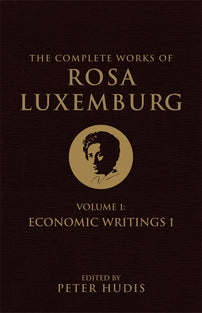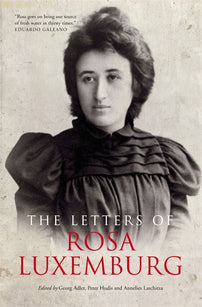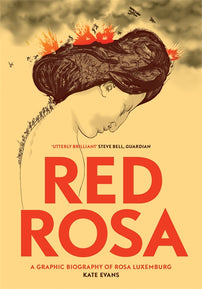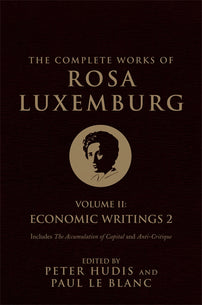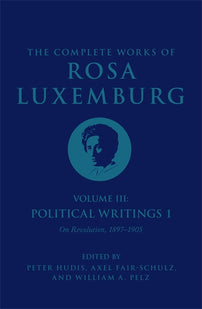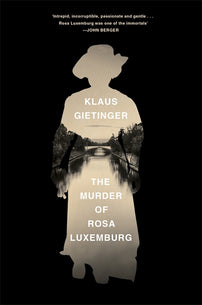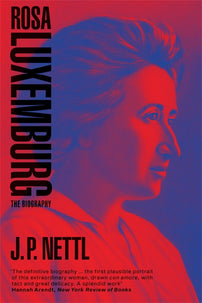“They were openly calling for murder”
On the 100th anniversary of the murder of Rosa Luxemburg and Karl Liebknecht, Klaus Gietinger is interviewed about the events that lead up to the murders, and who was responsible for them.

Mr Gietinger, almost 100 years have passed since the night from 15 to 16 January 1919, during which two leading figures of the German workers' movement, Rosa Luxemburg and Karl Liebknecht, were murdered. You have been investigating these political murders for three decades. Why does the subject fascinate you so much?
Thirty years ago, I watched the rerun of a two-part television drama about these acts on the South German Broadcasting (SDR) channel. Dieter Ertel, who shot it in 1968, had based his movie on meticulous research.[i] As I watched it I thought, “surely, a lot of these questions remain unanswered”. In fact, I wanted to make a movie about it, but I could not get any funding. Nobody was interested in the subject matter back then.
In the 1960s, the accepted thesis was that Rosa Luxemburg and Karl Liebknecht were executed by firing squad. That was supposed to give the impression of a certain lawfulness. However, you found out that it all happened very differently?
Indeed. The former Chief-of-Staff of the ‘Garde Kavallerie Schützen Division’ (GKSD) who committed the murders, Waldemar Pabst, personally knew the press officer of the West German government at the time, Felix von Eckart. It was therefore easy to create a myth even after World War 2.
The GKSD was a right-wing Freikorps, but the German government called upon it to crush the leftist insurgency occurring in Germany back then.
Let us enter the dramatic January 1919 events in Berlin, where a Spartacist uprising against the SPD-led German government is taking place...
Karl Liebknecht took part as a leader of the communists. However, the mass uprising had begun spontaneously when they tried to sack the Chief of the Berlin Police, Emil Eichhorn. Eichhorn was a member of the Independent Social-Democratic Party of Germany (USPD) – a haven for leftist men and women who had been expelled from the SPD for opposing war credits. However, the USPD also contained moderate politicians such as Eduard Bernstein and Karl Kautsky. In November 1918, as the old German Empire collapsed, a revolutionary SPD and USPD coalition government led by the future President of Germany, Friedrich Ebert, obtained power.
This Council of People’s Deputies, as it was named, cooperated with the old elites of the German Empire, the military leaders – especially Ebert. So the USPD, which did not agree with that cooperation, very quickly withdrew from government. The Chief of the Berlin Police, Emil Eichhorn, held the USPD’s last remaining bastion of power. The national government wanted to depose him – but he fought back, and that sparked the leftist uprising.
One of the Social-Democratic ministers in the national government was a certain Gustav Noske...
He was in charge of the military and de facto supreme commander of government forces at the time, which were essentially the Freikorps.
So basically, a Social-Democratic minister made use of those far-right units in order to crush the leftist uprising.
Exactly.
It’s fair to say that Karl Liebknecht and Rosa Luxemburg were fair game in those dramatic days. The Freikorps in Berlin were looking for them. What happened then?
As early as December, thousands of posters calling to “kill Liebknecht” had been put up. They were openly calling for murder. Liebknecht and Luxemburg went into hiding. Rosa Luxemburg was in two minds about the uprising – she didn’t actually want to join it. But in the end, she made up her mind thinking, “this is the second revolution”. She endorsed the idea in articles, but then she retreated again. Both of them stayed in Berlin and hid out in Wilmersdorf, a bourgeois part of town. That’s when someone blew the whistle on them and they were arrested by a citizens’ militia. However, the citizens’ militia didn’t know what to do with them, so they reported the captured to the highest authority, which for them was the GKSD Freikorps. The GKSD were headquartering at a luxury hotel, the Eden, so that’s where the militia brought the two. Commander Pabst then decided to have them killed.
In your book, you write that Pabst sought reassurance from the Social-Democratic minister Noske before he acted. He told Noske on the phone that he had captured Liebknecht and Luxemburg and that he wanted to kill them. What did Noske say?
I found notes about the conversation between Pabst and Noske in Pabst’s estate – in fact, I was the first to gain access to his estate. Noske essentially said, “I cannot give you the order to kill the two because that would destroy the SPD”. He told Pabst to call the corps commander of government troops, Walther Freiherr von Lüttwitz. “He will never give me that order”, Pabst replied. To this, Noske said, “then you have to take responsibility for your actions yourself”.
I found a second source for this, namely a German armed forces lieutenant-colonel. He was a conservative scientist who used to work for the Office for Military History Research, and he had personally attended a Pabst speech in which Pabst publicly recounted the same events. “What do you make of Pabst and his statements?”, I asked him. He replied, “if Pabst said that, then that’s how it was.”
According to your research, the murders of Rosa Luxemburg and Karl Liebknecht were brutal and bloody. What happened in detail?
Pabst planned to have them killed on their way to prison during the night from 15 to 16 January 1919. The plan was to blame ‘furious crowds’ for lynching the two. But then things got out of control. An officer from Pabst’s staff bribed a soldier on guard with 100 marks, ordering him to dispatch Luxemburg and Liebknecht with his rifle butt. The soldier obeyed, inflicting heavy head injuries to both victims. Rosa Luxemburg was thrown into a car. As the car started moving, lieutenant Hermann Souchon leapt up and killed her with a gunshot to the head.
They attempted to cover up the matter by drowning Rosa Luxemburg's body in the Landwehr canal, right?
That’s right. The commander of the convoy, Kurt Vogel, ordered them to throw her body in the Landwehr canal, where it was only found four months later. Protests against the murders ensued, including in the SPD rank and file. The government, however, which was by then exclusively SPD, had a military court look into the matter – not, for example, a civilian committee of inquiry. In fact, the military court that was commissioned belonged to the same division from which the murderers hailed. The military judge fully cooperated with Pabst and covered everything up; he was later rewarded by the Nazis, who moved him to Roland Freisler's ‘People’s Court’. The murderers were acquitted. Vogel, who received a minor sentence for “disposing of a dead body”, defected to the Netherlands aided by Wilhelm Canaris. The latter went on to become the head of the German counter-intelligence corps under Hitler, the Abwehr.
How did Karl Liebknecht die?
Before Luxemburg was hauled out, they drove Liebknecht from Eden Hotel into the dark Tiergarten park in an open-top car. The driver feigned car trouble, and they asked the heavily injured Liebknecht if he could walk. Liebknecht confirmed that he could and was killed by a bullet in the back. Shot when trying to escape, so the official version went.
These political murders were systematically covered up. From then on, the official myth had it that summary executions had taken place that night. Why did the myth last for such a long time?
In 1962, the West German government officially began circulating this interpretation of events. A former scriptwriter of Nazi propaganda movies, Felix von Eckert, authored that particular communiqué. He was well connected to Pabst, who had become an arms dealer after WW2.
The murderers enjoyed long lives.
Yes, they all did. Hermann Souchon lived until 1982. As late as in the 1960s, he sued against a South West Broadcasting (SWF) production that depicted him as a murderer. In truth, it would have been illegal to kill Luxemburg and Liebknecht immediately even under Prussian martial law – and incidentally, martial law had not even been declared. Martial law too required a trial and a defence lawyer. Then they would have waited for another 24 hours for a supreme commander to confirm the sentence. None of this happened. It was straightforward murder. Rosa Luxemburg and Karl Liebknecht were simply gunned down, and Noske the Social-Democrat gave his approval.
In your book, you directly address today’s SPD leadership. What do you expect from the leaders of the party?
The SPD has to come to terms with the skeletons in its closet. After all, they want to reforge the party, which I agree is a good idea. As part of this process, they should say: what was done to Luxemburg and Liebknecht was an injustice, and the SPD bears the responsibility. After these events, Noske was responsible for further murders, and he gave unlawful orders to kill prisoners.
Does the SPD really deny Noske’s role to this day?
It was denied and repressed it for a long time, but more recently, some in the ranks of the SPD have begun to acknowledge that it was a crime and that their party is implicated. SPD leader Andrea Nahles admitted in a speech about the November revolution that Noske was “probably” involved in the murders of Luxemburg and Liebknecht. That’s at least a beginning.
How did you conduct your research?
In the early 90s, I got in touch with Dieter Ertel, the author of the 1968 movie (Theo Metzger was the director – ed). He gave me plenty of advice. I studied the estates of the murderers, and I was in touch with the lawyers who had represented them in court in the 1960s. They were men in their eighties. I met Otto Kranzbühler, the lawyer who saved the last leader of the Third Reich, Karl Dönitz, from being executed at the 1946 Nuremberg trials. In the late 60s, Kranzbühler represented Hermann Souchon – crazily enough, as prosecutor against the SDR channel with respect to the implication that Souchon had killed Luxemburg. In conversation, Kranzbühler confirmed the phone call between Pabst and Noske to me. Naturally, I also studied a lot of files.
You ascribe great importance to these murders with respect to all that subsequently happened in the Weimar Republic. In your view, the murders deepened the divide between SPD and KPD so much they rendered the two parties incapable of jointly resisting the Nazis?
The murders served to deepen the divide between the SPD and the KPD. Unfortunately, the KPD was subsequently Stalinised. Neither Luxemburg nor Liebknecht would have gone along with that. The SPD, meanwhile, displaced its responsibility for the murders. It had become impossible for the two parties to talk to each other.
Interview by Claus-Jürgen Göpfert.
Frankfurter Rundschau, 12 December 2018.Translated by Maciej Zurowski
About Klaus Gietinger
Klaus Gietinger, 63, was born in Lindenberg in the Allgäu region. After completing a Social Sciences degree, he started making movies. His first feature-length film was Lond it luck (‘don’t let go’, 1979) about the peasants’ war in Allgäu. His 1984 cult movie Daheim sterben die Leut (‘at home, people die’) dealt with changes in the Allgäu region. He scripted and directed several episodes of the Tatort detective series for TV.
Gietinger’s documentary Heinrich der Säger (‘Heinrich the sawyer’) was a critique of Deutsche Bahn rail closures. In 2017, his documentary Wie starb Benno Ohnesorg (‘how did Benno Ohnesorg die’) made headlines. He wrote numerous books dealing with contemporary history, as well as football (Unser Weltmeister, ‘our world champion’, 2014). His ‘car hater book’ Totalschaden (‘write-off’, 2010) also became well known. (jg)
[i] Der Fall Luxemburg-Liebknecht, West Germany 1969, directed by Dieter Ertel. Available on YouTube (German without subtitles) at https://www.youtube.com/watch?v=fh4ZO6NRsUY - translator

